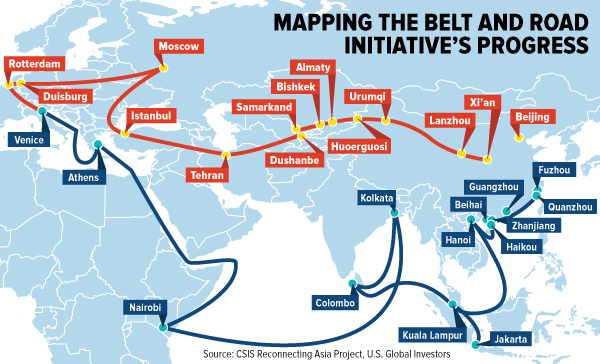
It was the best of times, it was the worst of times. A tale of two world leaders, U.S. president Donald Trump and China president Xi Jinping—both of whose countries have among the world’s best economies right now. But whereas Xi is playing Santa Claus to the rest of the world, doling out loans to finance-starved countries, Trump is playing Scrooge, waging an economic war with Canada, the European Union, China, and others.
Respected economist Art Laffer, whom I’ve written about before, has always supported leaders who ignite global trade rather than close off its borders. A full-blown trade war, Laffer said recently, would be a “curse” on the U.S. economy.
Post-World War II, it was the U.S. that led global trade and infrastructure build-out—the Marshall Plan in Europe, the Interstate Highway System domestically. Both projects required massive amounts of commodities and raw materials and employed hundreds of thousands of people.
Today, of the two leaders mentioned above, it’s Xi who has a clear foreign policy when it comes to trade and infrastructure.
U.S. Fund Flows Into Africa Are Slowing
Case in point: This week, Beijing will host the Forum on China-Africa Cooperation (FOCAC). The summit, which takes place once every three years and is attended by representatives from 52 African countries, touches on areas as diverse as technology, trade, infrastructure, diplomacy, culture, and agriculture.
During the last forum, in 2015, China pledged as much as $60 billion toward Africa’s development in interest-free loans. The Asian country, in fact, has increased its investments in the continent around 520 percent over the last 15 years, according to Global Trade Magazine.
As just one example, Kenya agreed to let China finance and build a standard gauge railway (SGR) connecting two major cities at a cost of $3.8 billion. Contracted by China Road and Bridge, the Mombasa-Nairobi SGR is Kenya’s largest infrastructure project since it declared independence from the U.K. in 1963.











Leave A Comment